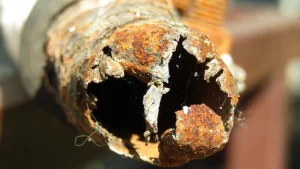
Washing machines are essential household appliances that save time, effort, and energy in daily life. However, like all mechanical devices, washers can wear down over time due to constant use, water exposure, and detergent buildup. Knowing the most common washer parts that might need replacement helps you address issues quickly and efficiently—before they lead to costly damage or complete failure. Whether you’re troubleshooting performance issues or trying to repair your washer, understanding these components can make all the difference.
1. Drive Belt
The drive belt is one of the most common parts that may need attention in a washer. It connects the motor to the drum, helping the drum spin during wash and spin cycles. Over time, this belt can loosen, crack, or even snap. When that happens, you’ll notice your washer’s drum no longer spins efficiently—or at all. Replacing the drive belt is a relatively simple task, and it can dramatically improve your machine’s performance and noise levels.
2. Water Inlet Valve
This small but crucial component controls the flow of hot and cold water into your washing machine. If your washer isn’t filling properly or only dispenses one temperature of water, the inlet valve may be clogged with sediment or malfunctioning. Replacing or cleaning it ensures balanced water pressure and consistent washing performance.
3. Pump Assembly
Your washer’s pump assembly is responsible for draining the dirty water after each cycle. A faulty pump can lead to standing water in the drum, unpleasant odors, or even leaks. Common signs of a failing pump include humming noises, slow draining, or complete stoppage of the drainage process. A replacement pump restores smooth water flow and helps prevent mildew growth inside your machine.
4. Lid Switch or Door Lock
For safety reasons, most washers won’t operate unless the lid or door is securely closed. The lid switch or door lock mechanism ensures this safety feature works correctly. If your machine suddenly stops mid-cycle or refuses to start, the switch might be broken or misaligned. Replacing it is a straightforward fix that restores proper functionality and ensures your washer operates safely.
5. Agitator or Impeller
Depending on your washer type, you’ll find either an agitator (in top-loaders) or an impeller (in high-efficiency models). These parts help move clothes through water and detergent for thorough cleaning. If you notice clothes aren’t coming out clean or the movement during cycles feels weak, the agitator dogs or impeller fins may be worn out. Replacement parts are inexpensive and can significantly improve washing performance.
6. Motor Coupling
The motor coupling connects the motor to the transmission in many top-loading washers. It’s designed to fail if the washer is overloaded, preventing motor damage. Over time, normal wear can cause it to crack or break. If your washer fills and drains but doesn’t spin or agitate, a damaged motor coupling might be the cause. Replacing it is a cost-effective solution compared to motor replacement.
7. Shock Absorbers and Suspension Springs
If your washer vibrates excessively or “walks” across the floor during spin cycles, the shock absorbers or suspension springs may be worn out. These components stabilize the drum and minimize movement. Replacing them helps keep your washer balanced and quiet, while also protecting internal parts from vibration damage.
8. Drain Hose and Clamps
A clogged or leaking drain hose can cause drainage problems or water spills. Over time, hoses can crack, develop buildup, or loosen at connection points. Inspecting and replacing them when necessary ensures smooth water removal and prevents potential water damage to your laundry area.
9. Heating Element (for Washer-Dryer Combos)
In washer-dryer combo units, a heating element helps dry clothes after the wash cycle. If your clothes come out damp or take too long to dry, a faulty heating element might be to blame. Replacing it restores proper drying performance and improves energy efficiency.
10. Control Board or Timer
Modern washers rely heavily on electronic control boards or mechanical timers to regulate cycles. When these components fail, you may notice erratic cycle times, unresponsive buttons, or a washer that won’t start. Though control board replacements can be pricier, they’re essential for restoring your machine’s full functionality.
Final Thoughts
Maintaining a washing machine doesn’t always mean replacing the entire unit. Often, a few new parts and some expert guidance are all you need to get your washer back in top shape. Keeping these common replacement parts in mind will help you diagnose issues early, save money, and extend your washer’s lifespan. A well-maintained machine not only cleans better but also uses less energy and water—helping you achieve efficiency and reliability for years to come.







